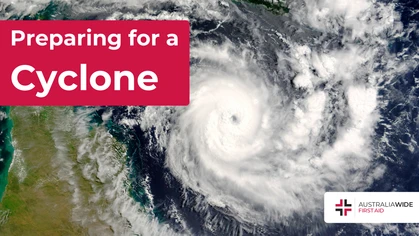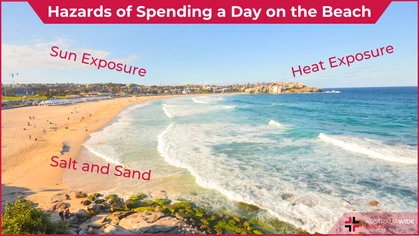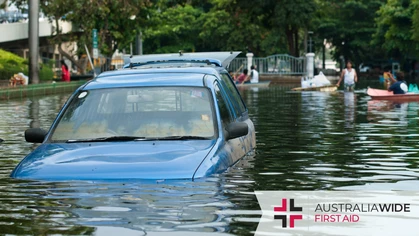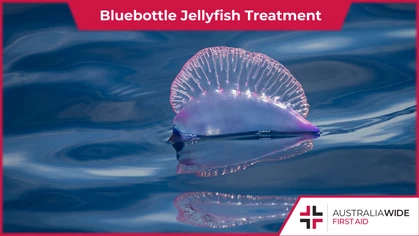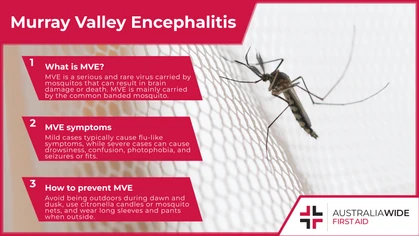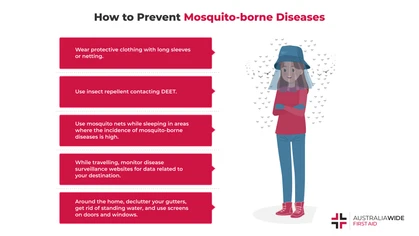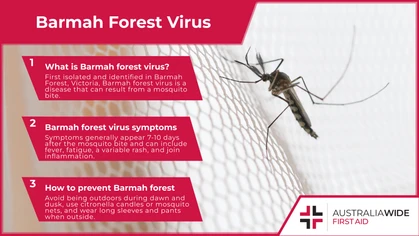Heat Exhaustion vs Heat Stroke

Seasonal Concerns
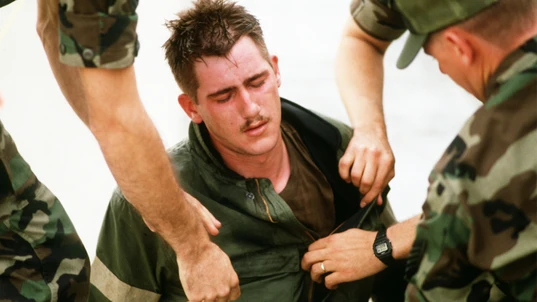
A man in need of first aid for Heat Exhaustion or Heat Stroke after physical exertion in a high temperature environment.
First aid treatment for heat exhaustion and first aid treatment for heat stroke are not only important interventions but can prove to be life-saving ones. These are the two most serious forms of heat-induced illness. With causes that share commonalities and many similar signs and symptoms, it’s important to understand the differences between heat stroke and heat exhaustion.How do heat exhaustion and heat stroke differ?
The single most important difference between heat exhaustion and heat stroke is that heat stroke is a life-threatening medical emergency. Both heat conditions are caused by a dramatic rise in body temperature. Heat exhaustion is a likely event when a person’s body temperature rises above 37° C — the body’s normal operating temperature is 36°–37° C. When body temperature goes over 40° C, the deadly threat of heat stroke enters the picture.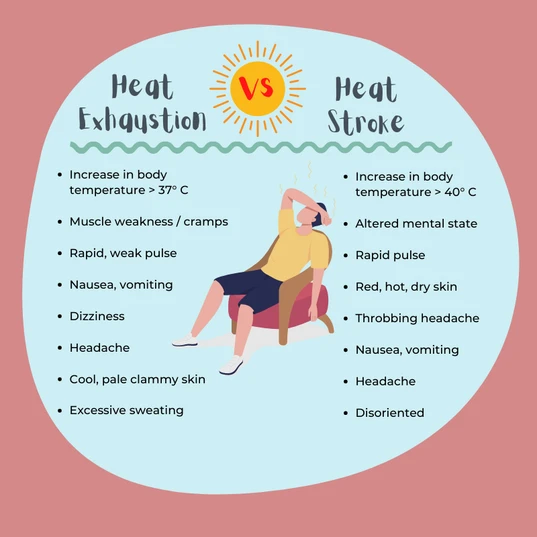
Heat Exhaustion
Heat exhaustion is a heat-related illness that is associated with body temperatures of 37°–40° C and often accompanied by dehydration. Dehydration causes a deficit of water and essential salts (electrolytes) in the body, reducing its ability to sweat. To deal with excess internal heat, the body would normally pump blood to the surface of the skin and release sweat. A person who is unable to cool down by sweating is vulnerable to heat exhaustion. This loss of body fluids and salts caused by decreased blood pressure and blood volume after prolonged exposure to high heat leads to fatigue — one of the major signs of heat exhaustion. Heat cramps may also present. Other signs to look for in heat exhaustion, include heavy sweating and dilated pupils. Symptoms of heat exhaustion also include:- Weak, rapid pulse
- Rapid, shallow breathing
- Low blood pressure or light-headedness when standing up or bending over
- Muscle weakness / cramps
- Cold, pale, damp skin, sometimes accompanied by goosebumps
- Headache
- Dizziness
- Nausea, vomiting
- Irritable or aggressive behaviour
- Red, flushed face
- Seem excessively tired
- Be unusually thirsty
- Have cool, clammy skin
- If they are old enough, they might complain of stomach or leg cramps
Looking to get you First Aid knowledge up to date?
We run certified First Aid courses throughout all major Acustralian citys. Find a location near you.
Heat Stroke
First aid treatment for heat stroke is critical. This is the most serious of heat-induced illnesses. Immediate medical intervention is necessary to avoid brain damage and damage to the heart, kidneys, muscles, as well as possible coma and death. Heat stroke, also known as sun stroke, is associated with body temperatures over 40° C. It is also known as ‘core temperature emergency’ where the body overheats, within 10 to 15 minutes, reaching temperatures that are dangerously high. At core temperatures above 40º C, the body’s temperature regulation centre in the brain ceases to function properly. First aid aims to quickly cool down core body temperature while waiting for emergency services to arrive. The signs of heat stroke include dry skin (lack of sweat), rapid, shallow breathing, pupils concentrated. Symptoms of heat stroke also include:- Altered mental state or behaviour – confusion, agitation, irritability, delirium, slurred speech, seizures, coma.
- When heat stroke is brought on by hot weather, the skin will feel hot and dry. When brought on by strenuous exercise, the skin may feel dry or slightly moist.
- Skin reddening as body temperature increases.
- Nausea, vomiting.
- Rapid pulse, placing stress on the heart as the body tries to deal with the heat.
- Headache.
How to prevent a heat-induced illness
The body’s natural defence mechanism against excessive heat is sweating. Sweating dissipates heat through the skin and through lung moisture evaporation. For this reason, loose-fitting, light-coloured clothing is preferable in hot weather. In hot weather, avoid strenuous activity, such as training, long-distance running, and playing sports. If you notice muscle cramps or feel weak, cease activity immediately and cool down. Avoid hot areas in direct sun and avoid sitting in a parked car in hot weather (a common cause of heat stroke in children). During sustained hot weather, air conditioning is more effective than fans to cool down and lower humidity. Stay well-hydrated. If you find yourself emptying your bladder only infrequently, or your urine is concentrated, you need to increase your fluid intake. Drink oral rehydration ‘sports drinks’. Avoid alcohol. The risk of heat stroke is increased by medications, such as diuretics, stimulants, and sedatives. Check with your pharmacist or doctor. Give yourself time to acclimatise if you plan to go to a hotter climate. This means limiting your outdoor activities for a few days, or more if you have risk factors for heat-related illness. Disclaimer: This article is for informational purposes only. It does not constitute, replace, or qualify as any form of first aid training.Other Resources
Originally published at
https://www.australiawidefirstaid.com.au/resources/heat-exhaustion-vs-heat-stroke
as part of the Australia Wide First Aid Articles Library

